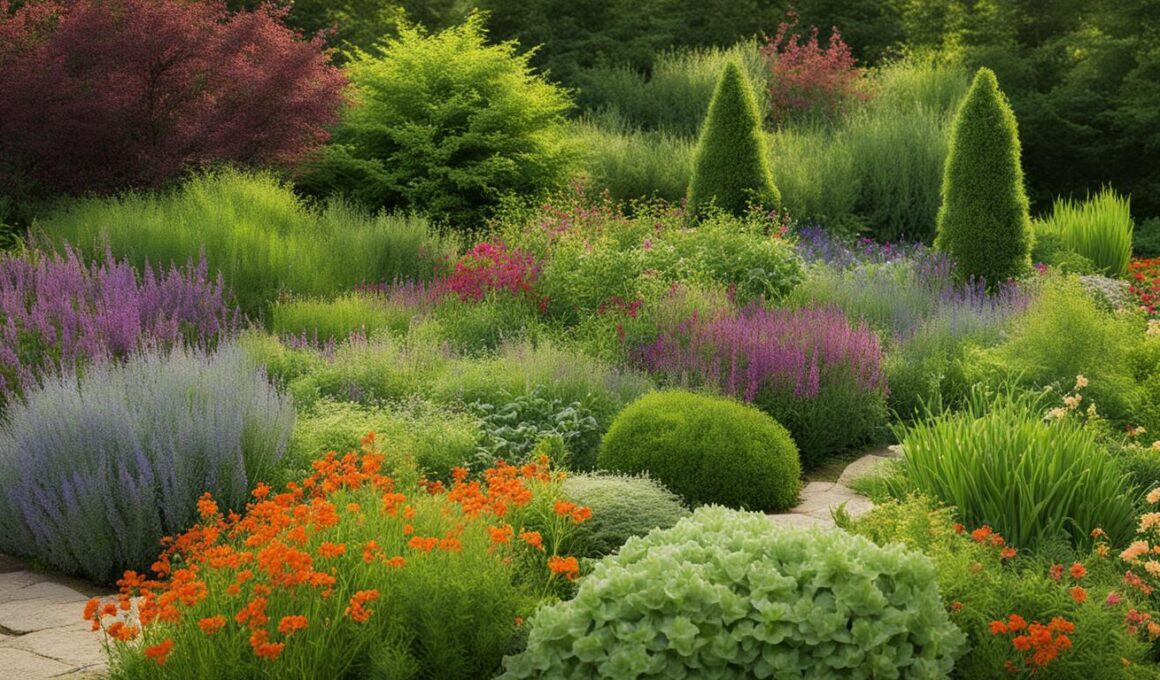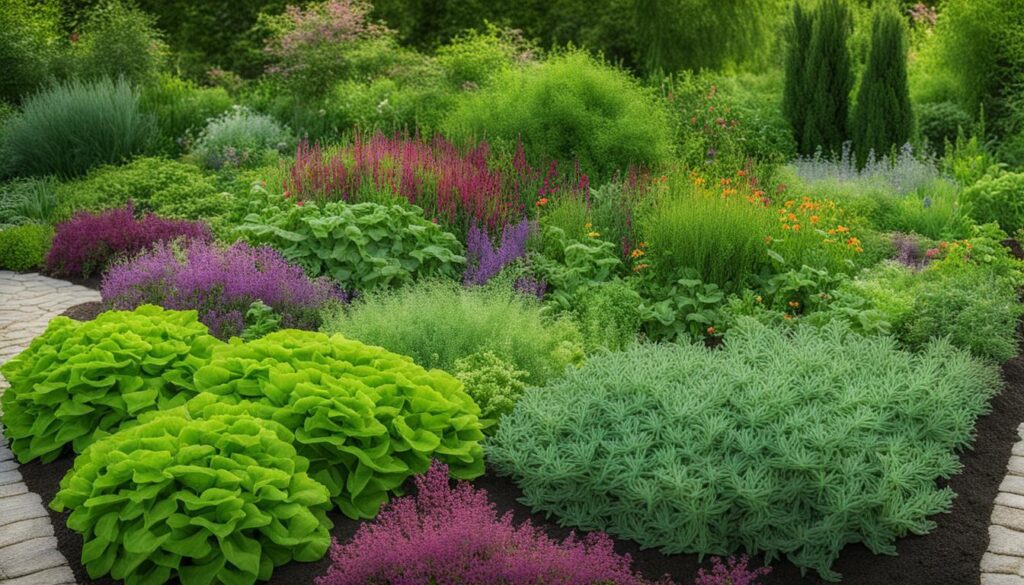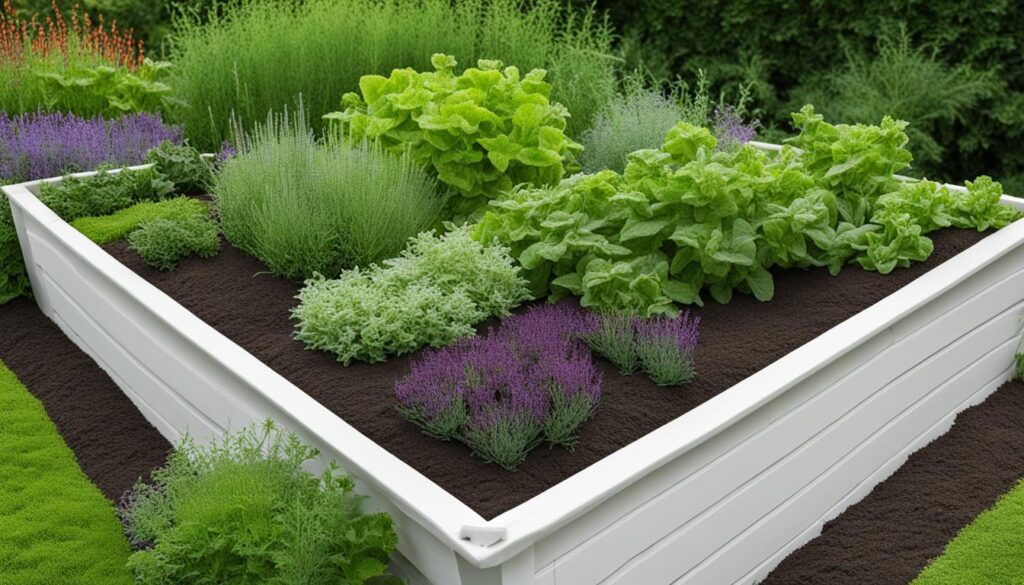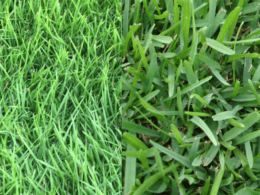Welcome to this guide on growing your garden and discovering the magic of companion planting. If you’re an herb enthusiast or simply looking to add some flavor and aroma to your cooking, this article is for you. We’ll explore the concept of companion planting and share valuable tips for creating a harmonious herb garden.
Key Takeaways
- Companion planting herbs with compatible plants can enhance growth and flavor.
- Understanding growing conditions and herb families is crucial for successful combinations.
- Basil and oregano, thyme and rosemary, and chives and mint make excellent herb pairings.
- Proper spacing, watering, sunlight, and soil quality are essential for companion planting success.
- Companion planting herbs provide benefits such as pest control, improved growth, and enhanced flavor.
What is Companion Planting and Why Bother?
Companion planting is a gardening technique that involves intentionally planting certain plants together to enhance their growth and maximize their benefits. When it comes to herbs, companion planting can have numerous advantages, making it a practice worth considering for your herb garden.
One of the main benefits of companion planting herbs is the ability to improve their flavor. Certain herb combinations can enhance the taste of each plant, creating a more diverse and flavorful harvest for your culinary adventures. Additionally, companion planting can help repel pests and attract beneficial insects, creating a natural pest control system in your garden.
Companion planting also promotes a more balanced and diverse garden ecosystem. By planting compatible herbs together, you can create a harmonious environment where plants support each other’s growth and well-being. This can result in healthier, more productive plants overall.
Table: Benefits of Companion Planting Herbs
| Benefits | Description |
|---|---|
| Improved Flavor | Companion planting can enhance the flavor of herbs, creating a more diverse and enjoyable culinary experience. |
| Pest Control | Certain herb combinations can naturally repel pests and attract beneficial insects, reducing the need for chemical pesticides. |
| Enhanced Growth | Companion planting creates a balanced garden ecosystem, promoting healthier and more productive herb growth. |
“Companion planting herbs can greatly enhance your gardening experience. By understanding the principles of companion planting and choosing compatible herbs, you can create a thriving and diverse herb garden.”
By practicing companion planting in your herb garden, you can enjoy the benefits of improved flavor, natural pest control, and enhanced growth. Stay tuned for the next section, where we will explore considerations for growing herbs together, helping you create successful herb combinations in your garden.
Considerations for Growing Herbs Together
Before planting herbs together, it’s important to consider their growing conditions. Different herbs have different requirements for soil moisture, pH levels, light exposure, and temperature. By understanding these considerations, you can create compatible herb combinations that will thrive in your garden.
One important factor to consider is the compatibility of growing conditions. Herbs that have similar growth rates and prefer similar soil moisture levels will thrive when planted together. For example, herbs like rosemary, thyme, and lavender prefer well-drained soil and can tolerate drier conditions, while herbs like mint and chives prefer a more moist soil. By grouping herbs with similar moisture preferences, you can ensure that they receive the appropriate amount of water.
Another consideration is the compatibility of light exposure. Some herbs, like basil and parsley, thrive in full sun, while others, like cilantro and dill, prefer partial shade. By grouping herbs with similar light requirements, you can ensure that they receive the optimal amount of sunlight for healthy growth.
Additionally, it’s important to consider the compatibility of pH levels. Some herbs, such as thyme and oregano, prefer alkaline soil, while others, like parsley and chives, prefer slightly acidic soil. By grouping herbs with similar pH preferences, you can create a harmonious growing environment for your herbs.
Understanding the growing conditions of your herbs and selecting compatible combinations will help you create a thriving herb garden. Below is a table outlining the growing conditions and compatible herb combinations:
| Herb | Soil Moisture | Light Exposure | pH Level | Compatible Herbs |
|---|---|---|---|---|
| Basil | Moist | Full Sun | Neutral to slightly acidic | Parsley, thyme, oregano |
| Mint | Moist | Partial Shade | Neutral to slightly acidic | Chives, rosemary, lemon balm |
| Thyme | Dry to medium | Full Sun | Neutral to alkaline | Rosemary, oregano, lavender |
| Cilantro | Moist | Partial Shade | Neutral to slightly acidic | Dill, parsley, basil |
By considering the growing conditions, you can create compatible herb combinations that will thrive in your garden. The table above provides an overview of the growing conditions and compatible herb combinations to help you get started. Experiment with different combinations and have fun creating a diverse and productive herb garden.
Recommended Herb Combinations
When it comes to companion planting herbs, certain combinations have proven to be particularly successful. By pairing specific herbs together, you can enhance their growth, repel pests, and create a visually appealing herb garden. Here are some recommended herb combinations to consider:
Basil and Oregano
The combination of basil and oregano not only adds a delightful blend of flavors to your dishes but also offers mutual benefits in the garden. Basil is known for its ability to repel pests such as mosquitoes and flies, while oregano has natural insect-repellent properties. Planting them together can help protect both herbs from harmful pests.
Thyme and Rosemary
Thyme and rosemary are both aromatic herbs that thrive in similar growing conditions. Combining them not only creates a visually appealing garden with contrasting textures but also attracts pollinators, such as bees and butterflies. These beneficial insects play a crucial role in the overall health and productivity of your herb garden.
Chives and Mint
If you’re looking to add some freshness to your herb garden, consider planting chives and mint together. Chives are known for their onion-like flavor, while mint adds a refreshing and cooling touch. These herbs complement each other’s growth and flavor, making them a perfect pairing for salads, soups, and other culinary creations.
Experimenting with different herb combinations can be a fun and rewarding experience. As you explore the world of companion planting, remember to consider the specific growing conditions, such as sunlight, watering, and soil quality, that each herb prefers. By finding the right combinations for your garden, you can create a harmonious environment where your herbs thrive and add abundant flavor to your meals.
Table: Recommended Herb Combinations
| Herb Combination | Benefits |
|---|---|
| Basil and Oregano | Repels pests, adds flavor to dishes |
| Thyme and Rosemary | Attracts pollinators, enhances aroma |
| Chives and Mint | Complementing flavors, refreshing touch |
By incorporating these recommended herb combinations into your garden, you can create a thriving ecosystem that benefits both your herbs and the overall health of your garden.
Tips for Successful Companion Planting
When it comes to companion planting, there are several key factors to consider for successful herb combinations. Paying attention to spacing, watering, sunlight, and soil quality will contribute to the health and productivity of your herb garden.
Spacing
Proper spacing is essential to ensure that each herb has enough room to grow and access the necessary nutrients. Overcrowding can lead to competition for resources and hinder the growth of your plants. As a general rule of thumb, provide each herb with enough space according to its specific growth requirements, typically mentioned on the seed packet or plant label. This will allow for healthy root development and optimal growth.
Watering
Each herb has its own watering preferences, so it’s important to understand the specific needs of the herbs you’re planting together. Some herbs prefer moist soil, while others thrive in drier conditions. Adjust your watering schedule accordingly, making sure not to over or underwater your plants. Regularly check the soil moisture levels to ensure that it remains consistent and appropriate for your herb combinations.
Sunlight
Most herbs require a good amount of sunlight to flourish. However, the specific light requirements may vary between different herbs. Some herbs prefer full sun, while others tolerate partial shade. Assess the sunlight conditions in your garden and choose herb combinations that have similar light preferences. This will ensure that all the herbs receive the necessary sunlight for proper growth and development.
Soil Quality
The quality of the soil plays a crucial role in the success of your companion planting efforts. Different herbs have varying soil pH and moisture requirements. Conduct a soil test to determine the pH level and amend the soil accordingly to meet the specific needs of your herb combinations. Additionally, enrich the soil with organic matter, such as compost or well-rotted manure, to improve its fertility and nutrient content.
By following these tips and considering factors like spacing, watering, sunlight, and soil quality, you can create a thriving and harmonious herb garden through successful companion planting.
Benefits of Companion Planting Herbs
Companion planting herbs not only adds beauty and variety to your garden but also offers a range of benefits that can enhance your gardening experience. By understanding the principles of companion planting and choosing compatible herbs, you can create a thriving and diverse herb garden that provides pest control, improved growth, and enhanced flavor.
1. Pest Control
One of the key benefits of companion planting herbs is natural pest control. Certain herbs have strong scents that repel harmful insects, reducing the need for chemical pesticides. For example, planting basil alongside tomatoes can help protect the tomatoes from pests like aphids and hornworms. Similarly, planting rosemary near cabbage plants can deter cabbage moths.
2. Improved Growth
Companion planting herbs can also promote improved growth in your garden. Some herbs, such as comfrey and borage, are known as dynamic accumulators. They have deep roots that mine nutrients from the soil and accumulate them in their leaves. When these leaves decompose, they release valuable nutrients that benefit neighboring plants. Planting these dynamic accumulator herbs alongside other vegetables or herbs can provide a natural source of nutrients, leading to healthier and more productive plants.
3. Enhanced Flavor
Another advantage of companion planting herbs is the potential to enhance the flavor of the herbs themselves, as well as nearby plants. For example, planting dill near cucumbers can improve the flavor of the cucumbers. The oils released by the dill plant infuse the nearby cucumbers, resulting in a more delicious harvest. Similarly, planting thyme near strawberries can enhance the flavor of the berries.
Overall, companion planting herbs can contribute to a balanced garden ecosystem, fostering healthier plants and increased productivity. By harnessing the benefits of pest control, improved growth, and enhanced flavor, you can create a beautiful and bountiful herb garden that enriches your culinary adventures and brings joy to your gardening endeavors.
What are the benefits of planting herbs together in a garden?
Planting herbs together in a garden can create a natural symbiotic relationship that helps them thrive with herbs planting. They can protect each other from pests, improve soil health, and even enhance each other’s flavors. Additionally, planting herbs together can save space and make gardening more convenient.
Conclusion
Creating a successful herb garden through companion planting is an excellent way to enhance your gardening experience. By understanding the concept of companion planting and selecting compatible herbs, you can establish a thriving and diverse herb garden. Consider the growing conditions, recommended herb combinations, and tips for successful companion planting to maximize the benefits of growing herbs that grow well together.
When planning your herb garden, take into account the specific needs of each herb in terms of watering, sunlight, spacing, and soil quality. Providing the right conditions will allow each herb to flourish without competing for resources, resulting in healthier and more productive plants.
Companion planting herbs offers numerous advantages. By repelling pests and attracting beneficial insects, you can effectively control garden pests while promoting a balanced ecosystem. Additionally, companion planting can improve the growth and flavor of your herbs, enhancing the culinary experience in your kitchen.
With a little planning and experimentation, you can create a beautiful and productive herb garden that will bring joy to your gardening endeavors and elevate your culinary adventures. So start your herb garden today, harnessing the power of companion planting to grow a bountiful array of herbs that will enhance your cooking and delight your senses.
FAQ
What is companion planting?
Companion planting is the practice of intentionally planting certain plants together to enhance their growth and maximize their benefits.
What are the benefits of companion planting herbs?
Companion planting herbs can improve flavor, repel pests, attract pollinators, and create a diverse and balanced garden ecosystem.
Which herbs grow well together?
Some recommended herb combinations include basil and oregano, thyme and rosemary, and chives and mint.
What factors should I consider when growing herbs together?
It’s important to consider spacing, watering, sunlight, and soil quality to ensure successful companion planting.
How does companion planting benefit herb gardens?
Companion planting can control pests, improve growth and flavor, and create a balanced ecosystem for healthier plants and increased productivity.










